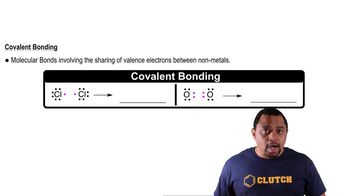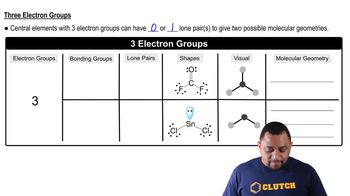Textbook Question
Which element in each of the following pairs has more nonmetallic character?
(a) Se or Te
86
views
 Verified step by step guidance
Verified step by step guidance



Which element in each of the following pairs has more nonmetallic character?
(a) Se or Te
Which compound in each of the following pairs is more ionic?
(b) P4O6 or Ga2O3
Which compound in each of the following pairs is more ionic?
(d) BCl3 or AlCl3
Consider the elements C, Se, B, Sn, and Cl. Identify which of these elements:
c. Is the best electrical conductor
Consider the elements C, Se, B, Sn, and Cl. Identify which of these elements:
e. Forms a hydride with the empirical formula
Consider the elements N, Si, Al, S, and F. Identify which of these elements:
c. Is a semiconductor